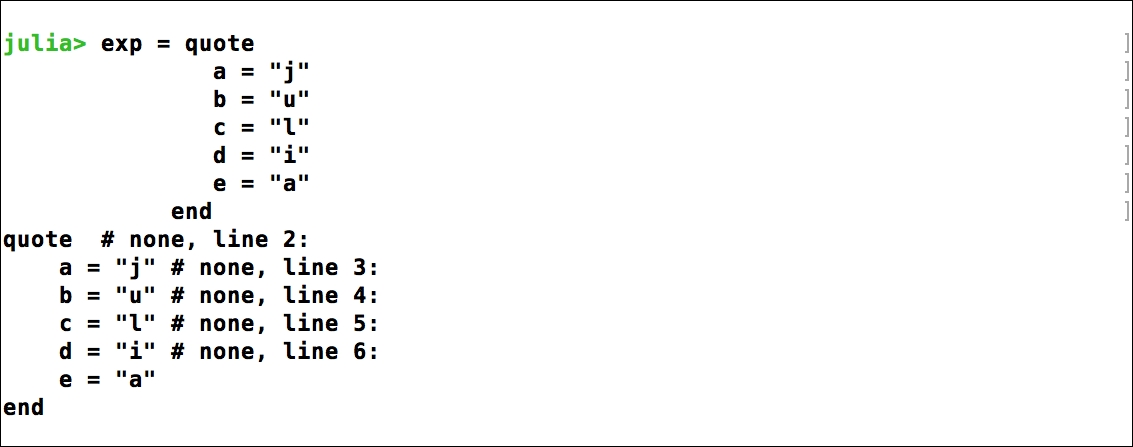The usage of a semicolon to represent expressions is known as quoting. The characters inside the parentheses after the semicolon constitute an Expression object.
To check this behavior, let's check for the type of a similar statement that has an object inside the parentheses after a semicolon. This can be done in the REPL as follows:
typeof(:((a + b) * c) / 6))
The preceding command gives the following output:

Multiple expressions can be represented as a block by quoting them. The syntax would be as follows:
exp = quote some code some more code more code a little more ... end
An example with some code inside the code block would look like this:

Now, let's verify the type of the exp variable with the typeof() function.

So, the the code block enclosed inside quote and end is indeed an expression.



